Image of the Day 2019 Archive
Explore our Image of the Day 2019 Archives!
April 2019
'Jovey McJupiterface'

Monday, April 1, 2019: Happy April Fools' Day from space! This goofy-looking face on Jupiter is no joke. NASA's Juno spacecraft captured this image of Jupiter during a flyby in 2017, and citizen scientist Jason Major processed the raw data from Juno to highlight the smug-looking mug formed by storms swirling in the planet's atmosphere. Major named this image "Jovey McJupiterface."
The Wild Duck Cluster
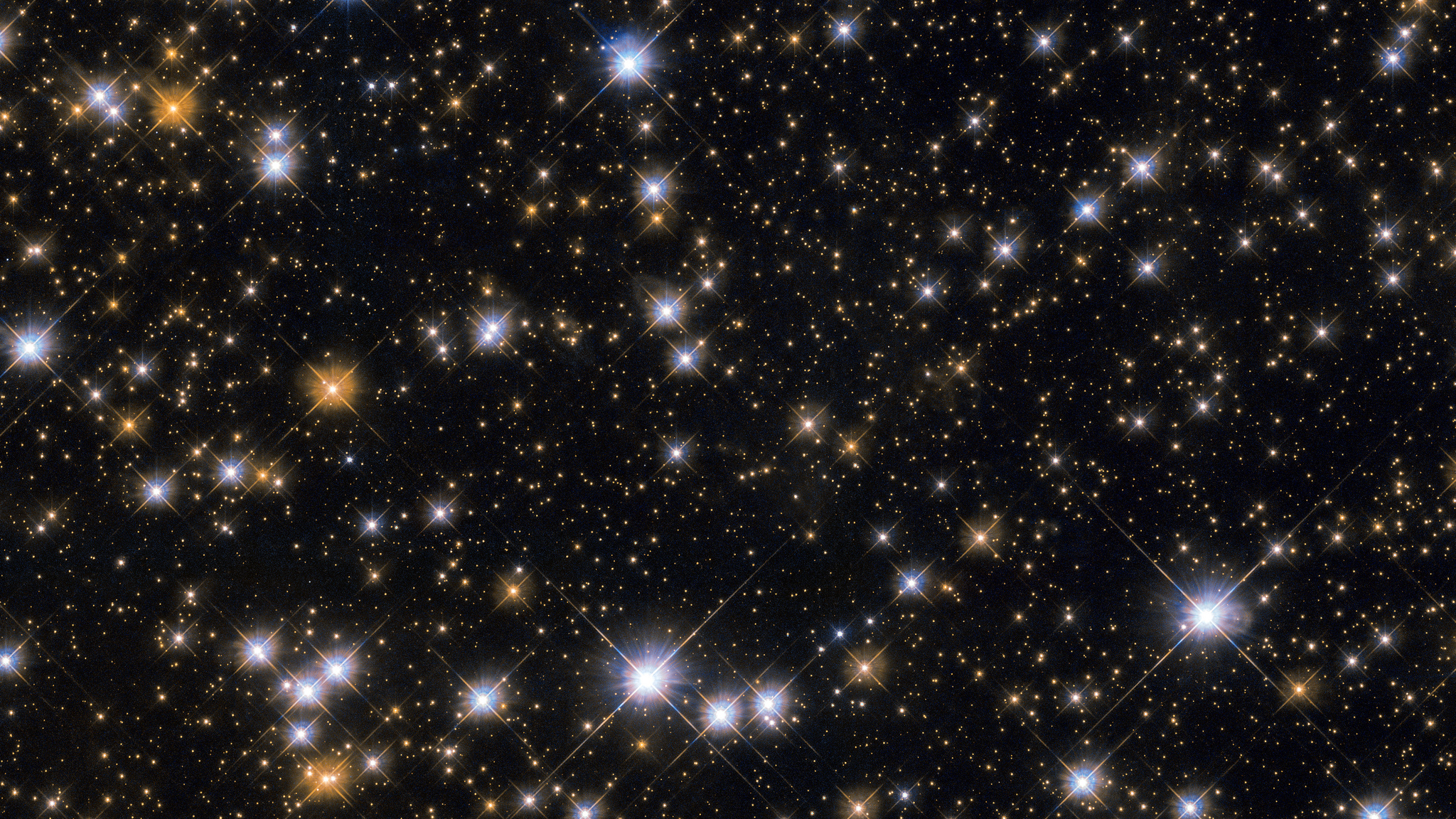
Tuesday, April 2, 2019: A new view from the Hubble Space Telescope features a colorful open star cluster known as Messier 11. This group of stars is nicknamed the "Wild Duck Cluster" because its brightest members form the shape of the letter "V," resembling a flock of flying ducks. Messier 11 is located more than 6,000 light-years from Earth in the constellation Scutum, and astronomers believe the cluster formed about 220 million years ago. — Hanneke Weitering
Northern Lights Over Russia

Wednesday, April 3, 2019: Green auroras glow above Earth's city lights in this photo taken from the International Space Station. One of the Expedition 59 astronauts captured this view from 256 miles (412 kilometers) above the Earth, while the space station was passing over Russia and Kazakhstan.
Cargo Launch Seen from Space

Thursday, April 4, 2019: When Russia launched the Progress 72 cargo spacecraft to the International Space Station this morning, the Expedition 59 crew could see the Soyuz rocket's plume from about 250 miles (400 kilometers) above the Earth. Canadian Space Agency astronaut David Saint-Jacques, one of the six crewmembers currently at the station, tweeted this photo as the Progress cargo ship began its 3-hour trip to the orbiting lab. "Fresh supplies coming our way!" he said. — Hanneke Weitering
A Jovian Cyclone
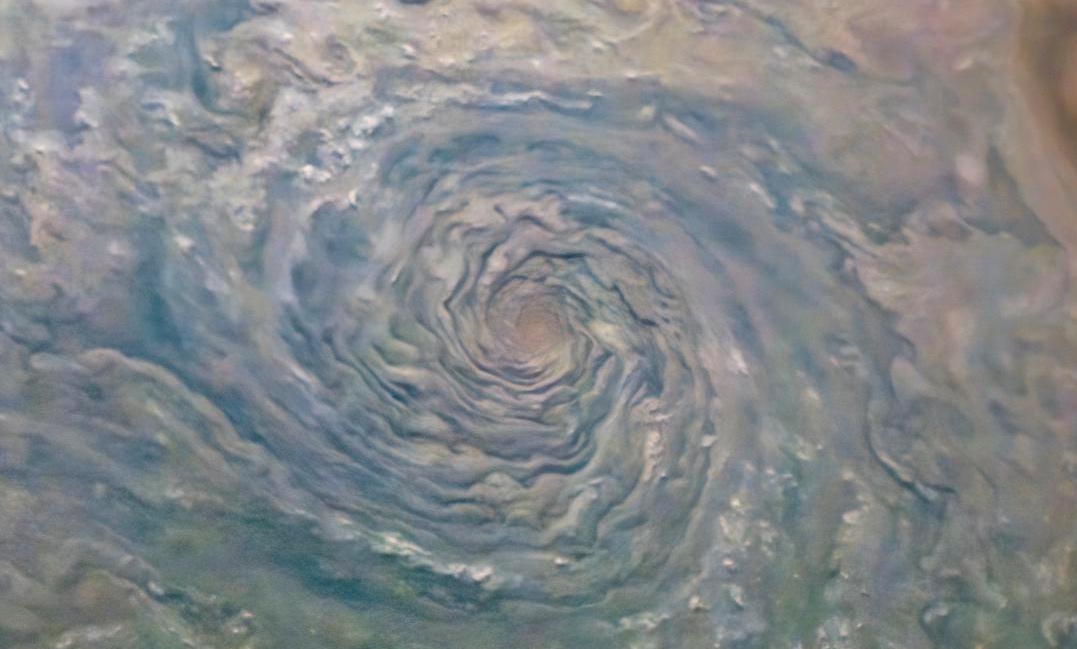
Friday, April 5, 2019: A cyclonic storm churns through Jupiter's northern hemisphere in this new view from NASA's Juno spacecraft. The swirling cloud formation looks a lot like a hurricane on Earth, with fluffy clouds popping up from the storm's spiral arms. Juno captured this view with its JunoCam imager on Feb. 12, when it was about 5,000 miles (8,000 kilometers) above Jupiter's cloud tops. — Hanneke Weitering
Webb in the Clean Room

Monday, April 8, 2019: Engineers prepare the optical portion of NASA's James Webb Space Telescope for integration with its rocket at a Northrop Grumman facility in Redondo Beach, California. The new space observatory is scheduled to launch in 2021 on an Ariane 5 rocket. — Hanneke Weitering
Starhopper in Silhouette

Tuesday, April 9, 2019: SpaceX's Starhopper prototype is seen during testing operations at the company's launch site in Boca Chica, Texas near Brownsville, Texas in this photo released by CEO Elon Musk on April 7, 2019.
Get the Space.com Newsletter
Breaking space news, the latest updates on rocket launches, skywatching events and more!
Starhopper is a prototype for SpaceX's larger Starship spacecraft and its Super Heavy booster. The prototype will make test hops to suborbital altitudes to prove technologies needed for SpaceX's 100-person Starship spacecraft for deep-space flights to the moon, Mars and beyond. -- Tariq Malik
Earth Photobombs a 'Space Selfie'
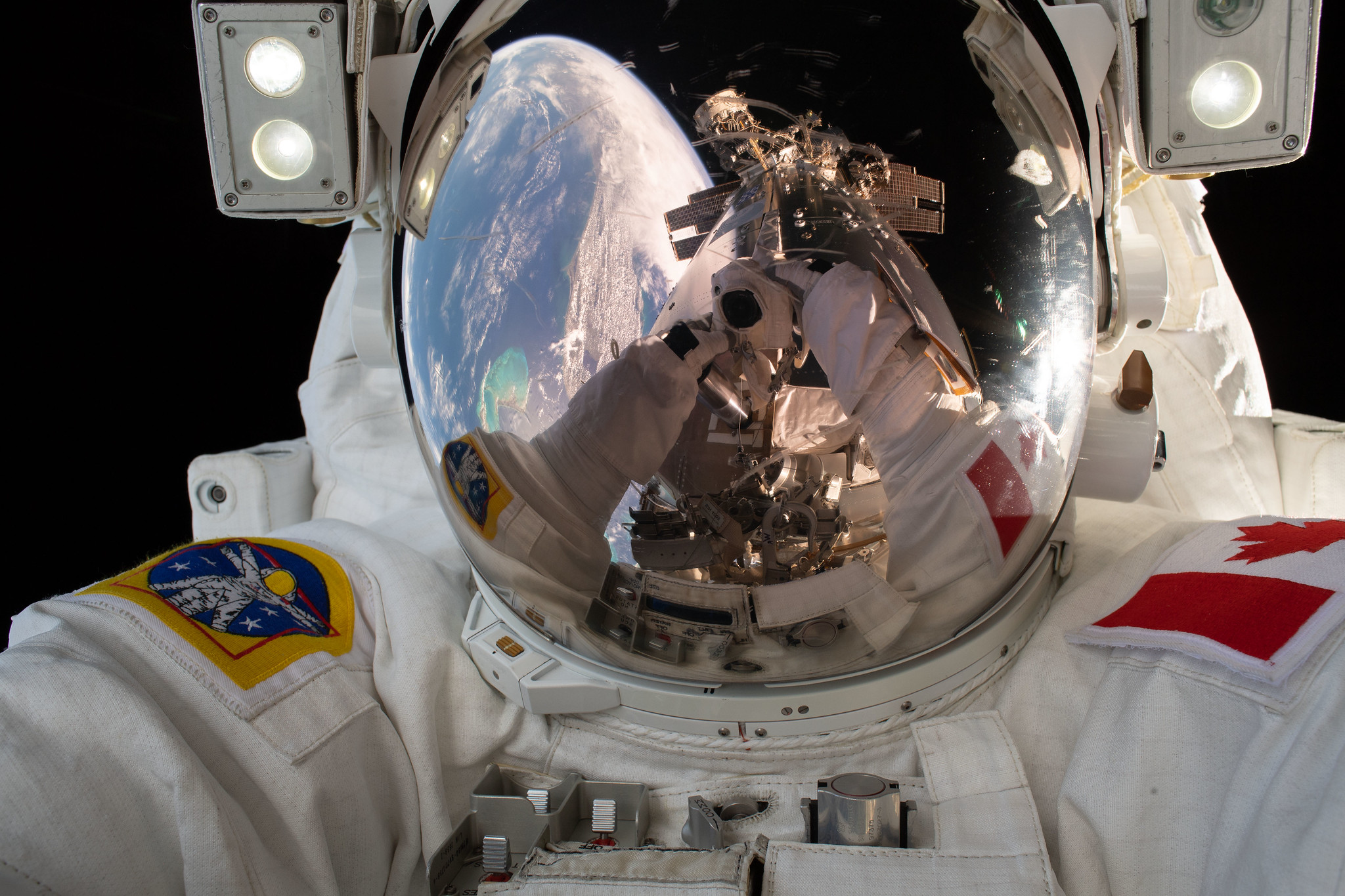
Wednesday, April 10, 2019: Earth's reflection looks like a beautiful "blue marble" on the visor of Canadian Space Agency astronaut David Saint-Jacques, who took this selfie during a spacewalk outside the International Space Station on April 8. — Hanneke Weitering
Twin Rockets Make 'Fireworks' Over Norway

Thursday, April 11, 2019: Two sounding rockets created this colorful light display in the night sky as they launched on a mission to study Earth's auroras. NASA's Auroral Zone Upwelling Rocket Experiment (AZURE) mission launched two Black Brant XI-A sounding rockets on April 5 from the Andøya Space Center in Norway. — Hanneke Weitering
SpaceX Aces Falcon Heavy Booster Landings

Friday, April 12, 2019: The two side boosters on SpaceX's Falcon Heavy rocket stick a simultaneous upright landing at Cape Canaveral Air Force Station in Florida following the launch of the Saudi Arabian communications satellite Arabsat-6A on Thursday (April 11). A third booster, the core stage, landed shortly afterward on a drone ship in the Atlantic Ocean. This was the second successful flight of a Falcon Heavy and the first commercial mission for the enormous rocket. — Hanneke Weitering
Meteor Streaks Over Portuguese Castle

Monday, April 15, 2019: As star trails circle over the Castle of Noudar in Barrancos, Portugal, a stray meteor streaks across the night sky. A thick light trail from the bright planet Jupiter inches through the sky to its right, and a thinner trail from the brilliant star Arcturus dominates the upper-right edge of the image. Astrophotographer Sérgio Conceição captured 80 frames to create this time-lapse view of the night sky on Feb. 17, 2019. — Hanneke Weitering
Antares at Sunrise
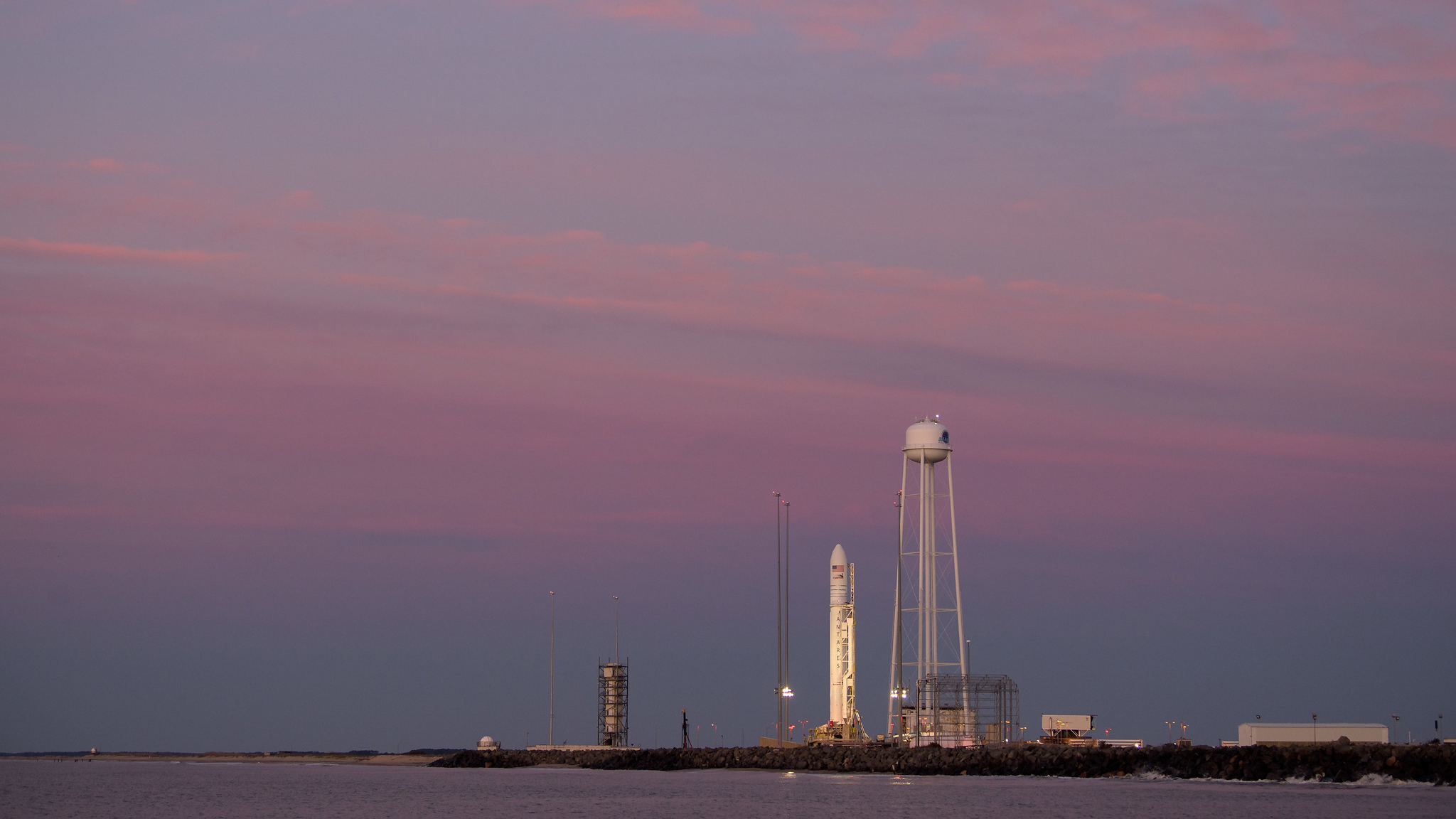
Tuesday, April 16, 2019: The Antares rocket that will launch the next cargo shipment to the International Space Station stands tall on Pad-0A at NASA's Wallops Flight Facility in Virginia during sunrise this morning. Tomorrow (April 17) the rocket will launch the Cygnus CRS-11 cargo spacecraft to the orbiting laboratory with about 7,600 lbs. (3,450 kg) of supplies for the Expedition 59 crew. — Hanneke Weitering
It's a Giant Space Jellyfish!

Wednesday, April 17, 2019: Swimming through a group of galaxies more than 200 million light-years away from Earth is the so-called "jellyfish" galaxy named ESO 137-001. This celestial jellyfish is a spiral galaxy much like the Milky Way, but it has long "tentacles" of hot gas streaming away from the galactic disk. Scientists aren't sure how the gas is being stripped away, but NASA's James Webb Space Telescope may be able to shed some light on the origin of those tentacles by studying them in unprecedented detail after its planned launch in 2021. This view combines visible-light imagery from the Hubble Space Telescope and X-ray data from the Chandra X-ray Observatory. — Hanneke Weitering
Beresheet's Last Photo

Thursday, April 18, 2019: This is the last photo that the Israeli moon lander named "Beresheet" took before it crashed into the surface of the moon in a failed landing attempt last week. At the time, the spacecraft was about 9 miles (15 kilometers) above the lunar surface, just a few moments before mission control lost contact with the spacecraft. Investigators believe that a "manual command" inadvertently caused Beresheet's main engine to shut down, and the lander crashed because it couldn't slow down in time to execute a soft landing. — Hanneke Weitering
The Egg Nebula

Friday, April 19, 2019: Here's a colorful cosmic Easter egg to start off your holiday weekend! The Egg Nebula, seen here in a view from the Hubble Space Telescope, is a "preplanetary nebula," or a cloud of dust and gas ejected from a dying star and illuminated by the star's last bit of light. Located about 3,000 light-years away from Earth in the Cygnus constellation, the faint Egg Nebula was first spotted by astronomers in the 1970s, and it was the first nebula of its kind that anyone had ever seen. It was then imaged by Hubble in the 1990s. — Hanneke Weitering
Easter Sunrise in Space

Monday, April 22, 2019: Happy Earth Day (and happy late Easter)! Here's what the Earth looked like from the International Space Station during one of the 16 sunrises the astronauts experienced on Easter Sunday (April 21). Because the orbiting laboratory orbits Earth while traveling at a speed of about 17,500 mph (28,000 km/h), the astronauts see the sun rise and set every 45 minutes as they race around the globe. NASA astronaut Anne McClain tweeted this sunrise photo from space last night. — Hanneke Weitering
A 'Comet Cat'

Tuesday, April 23, 2019: From this angle, Comet 67P/Churyumov-Gerasimenko looks a bit like a rocky space cat! The European Space Agency's Rosetta spacecraft captured this view of the comet in October 2014, about one month before it dropped off the smaller Philae lander to touch down on the comet's surface. At the time, Rosetta was 11.6 miles (18.6 kilometers) from the comet's surface. The cat's "ears" are twin peaks that surround a region known as the "C. Alexander Gate," which was named for Rosetta project scientist Claudia Alexander, who passed away in July 2015. — Hanneke Weitering
Happy Birthday, Hubble!

Wednesday, April 24, 2019: NASA's Hubble Space Telescope launched on this day 29 years ago. To celebrate the beloved telescope's anniversary, the Hubble team released this new image of the Southern Crab Nebula. This hourglass-shaped nebula is the product of interactions between stars in a binary system, where a red giant star is feeding material to its white dwarf companion. — Hanneke Weitering
STS-31 Deploys the Hubble Space Telescope

Thursday, April 25, 2019: Twenty-nine years ago today, astronauts on the space shuttle Discovery used the Canadarm robotic arm to deploy the Hubble Space Telescope into orbit. This view from the shuttle's cargo bay shows the iconic telescope glistening in the sun shortly after it was released. — Hanneke Weitering
Related: On This Day in Space! Hubble Space Telescope Deployed
Queensland Floods Seen from Space

Friday, April 26, 2019: Muddy water gushes into the Coral Sea near the Great Barrier Reef after torrential rains flooded Queensland, Australia earlier this year. The European Space Agency's Copernicus Sentinel-2 satellite, which monitors coastal waters, captured this image on Feb. 10, a few days after the rainfall stopped. The high-resolution view shows sediment flowing from the Burdekin River into the Coral Sea, not far from the Great Barrier Reef lagoon. — Hanneke Weitering
A Spiral Starburst Galaxy

Monday, April 29, 2019: Meet Messier 100, a so-called "grand design" spiral galaxy with bright, well-defined arms that tightly curl around its galactic core. Located about 60 million light-years away from Earth in the constellation Coma Berenices, Messier 100 is a known "starburst" galaxy that serves as a stellar nursery for waves of new star formation. Astronomers used the Atacama Large Millimeter/submillimeter Array (ALMA) in Chile to capture this new view of Messier 100 as part of an astronomical census called Physics at High Angular resolution in Nearby GalaxieS (PHANGS). — Hanneke Weitering
Winds Blow Over the Canary Islands
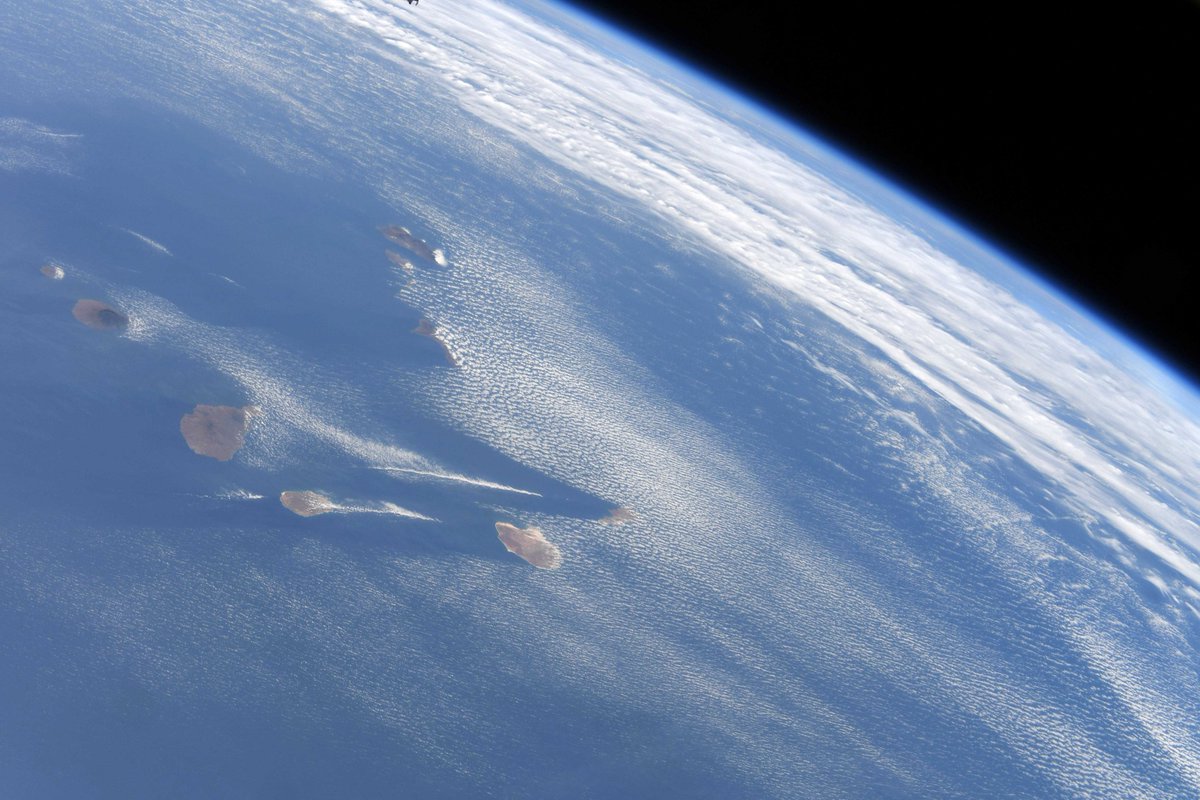
Tuesday, April 30, 2019: Wispy clouds sweep across the sky over the Canary Islands in this photo by astronaut David Saint-Jacques of the Canadian Space Agency. It's "easy to tell which way the wind is blowing over the Canaries," Saint-Jacques tweeted yesterday from the International Space Station. — Hanneke Weitering
Can't find the date you're looking for? It may have been a weekend or holiday, when we don't normally update our Image of the Day.
Click 'NEXT PAGE' below for May >
Join our Space Forums to keep talking space on the latest missions, night sky and more! And if you have a news tip, correction or comment, let us know at: community@space.com.

Space.com is the premier source of space exploration, innovation and astronomy news, chronicling (and celebrating) humanity's ongoing expansion across the final frontier. Originally founded in 1999, Space.com is, and always has been, the passion of writers and editors who are space fans and also trained journalists. Our current news team consists of Editor-in-Chief Tariq Malik; Editor Hanneke Weitering, Senior Space Writer Mike Wall; Senior Writer Meghan Bartels; Senior Writer Chelsea Gohd, Senior Writer Tereza Pultarova and Staff Writer Alexander Cox, focusing on e-commerce. Senior Producer Steve Spaleta oversees our space videos, with Diana Whitcroft as our Social Media Editor.
